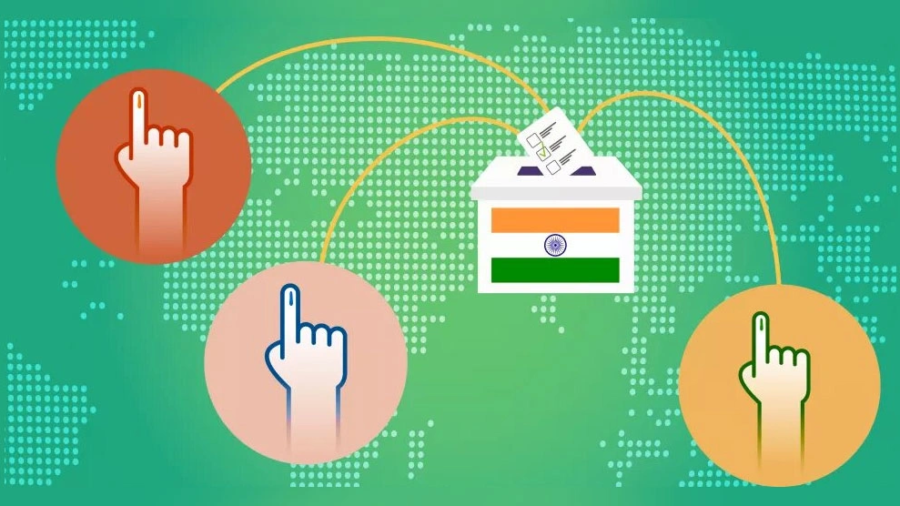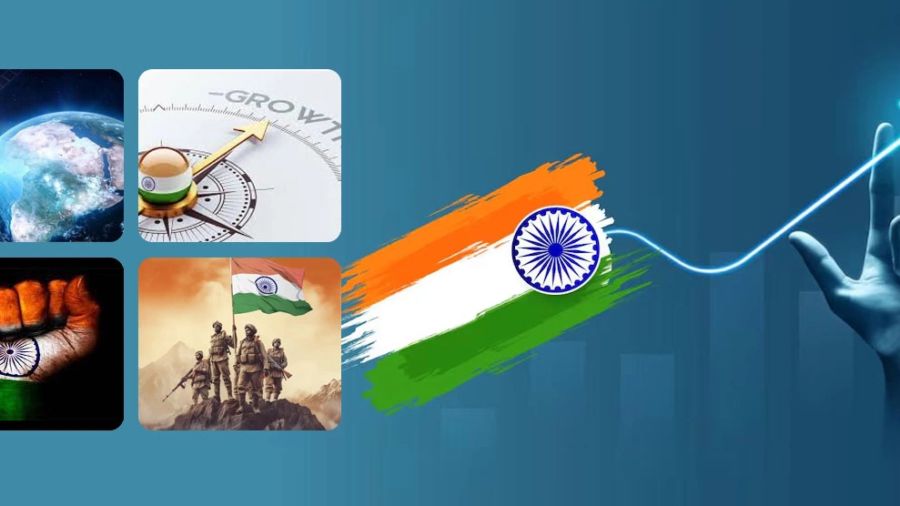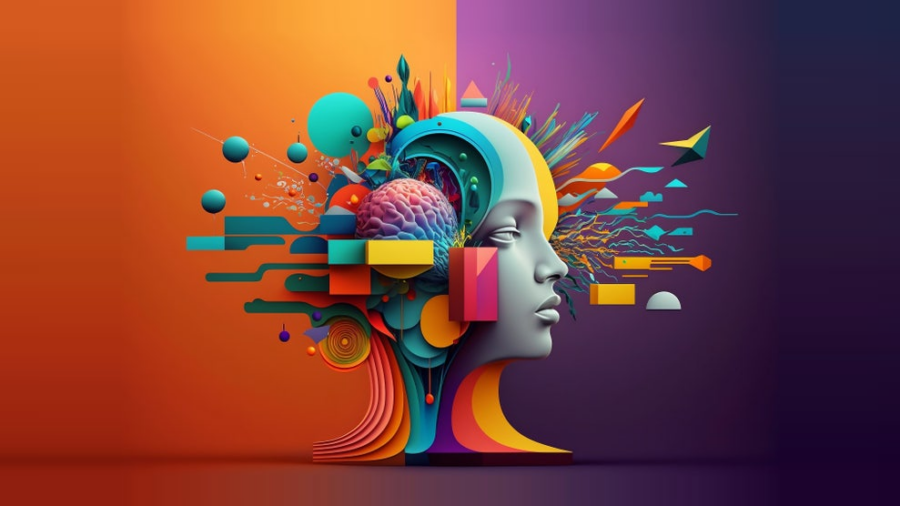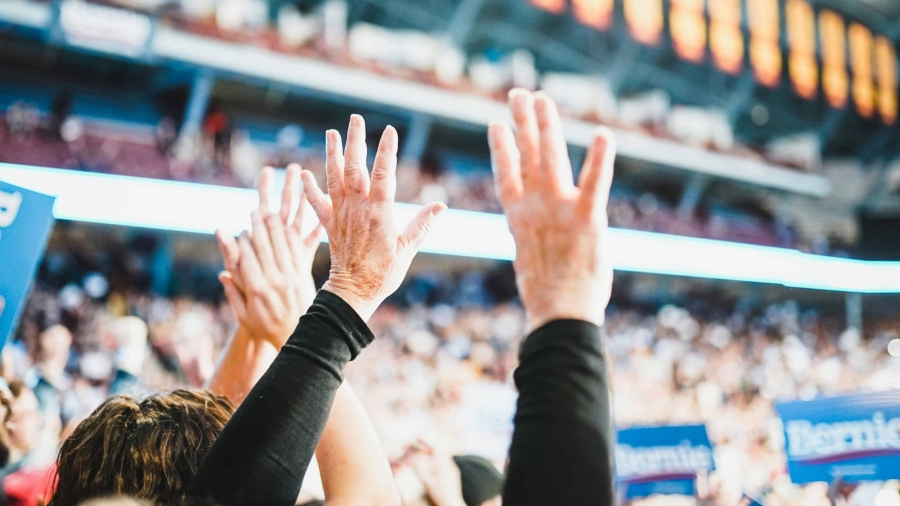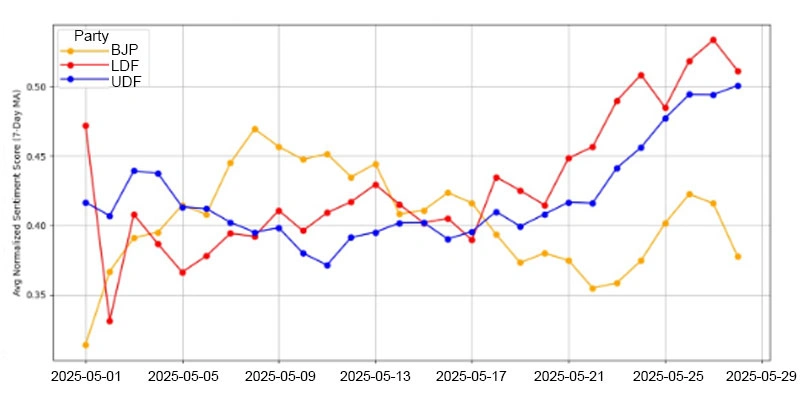
As the Nilambur by-election approaches, analysis by Semiotica, a leading political intelligence and sentiment research platform, reveals a clear upward trend in public opinion across all three major political fronts-UDF, LDF and BJP throughout May 2025. This report reveals what’s on voters’ minds and what could influence the final outcome.
Using an AI based analytical method, the study tracked online discourse, media mentions, and voter conversations from May 1 to May 29. The findings indicate a surging political engagement in Nilambur, with all major parties registering improved popularity ratings, albeit with varying trajectories.
LDF ( Red Line) started the month with high volatility but surged sharply in the second half of May, peaking just before the month’s end, signaling a possible consolidation of support or momentum behind a key campaign event or candidate move.
UDF (Blue Line) maintained a stable sentiment throughout early May but saw a steady climb post-May 17, suggesting growing acceptance or effective outreach in the final campaign days.
NDA (Yellow Line) showed early gains, followed by mid-month dips, and a mild resurgence later, indicating fluctuating public perception possibly tied to local-level dynamics or external commentary.
What’s notable is not just the rise in positive opinion levels, but the simultaneous lift across all fronts, hinting at a highly contested, high-stakes political environment. Nilambur, traditionally not in the national spotlight, now appears to be a microcosm of Kerala’s evolving electoral sentiment.
Why It Matters
This trend underscores rising voter engagement, possibly driven by heightened ground campaigns, increased digital mobilization, and the impact of prominent candidate announcements, including the recent entry of independent candidate P. V. Anwar, which may have altered traditional equations.
Semiotica’s analysis provides a pulse of the electorate, offering valuable early signals ahead of polling day
As Nilambur gears up for a heated contest, one thing is clear: public mood is shifting, and everyone is paying attention.
As the Nilambur by-election heats up, one thing is certain—voter sentiment is shifting rapidly, and every move counts. In the coming days, Semiotica will dive deeper into candidate-specific popularity, favorability, and leadership traits that align best with the developmental aspirations of the Nilambur constituency. Who truly connects with the people? Who stands for real progress? Stay tuned as Semiotica.ai continues to decode the pulse of Nilambur—data-backed, unbiased, and real-time.
Follow us. The numbers never lie.

